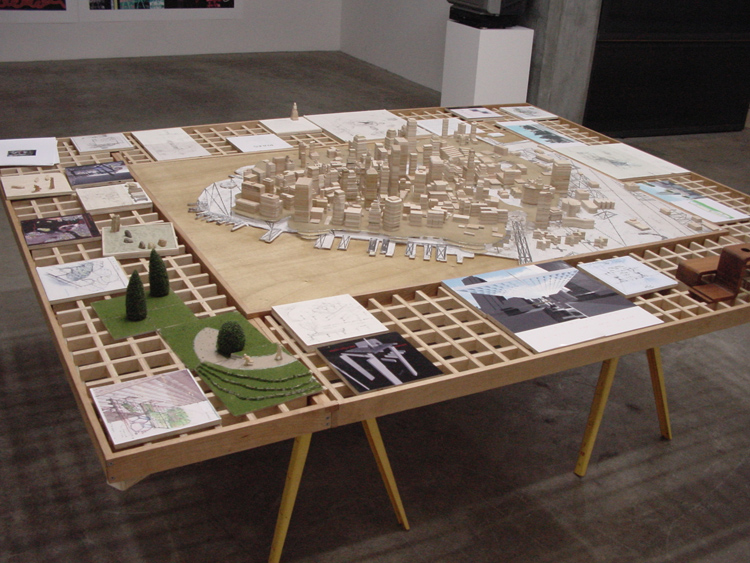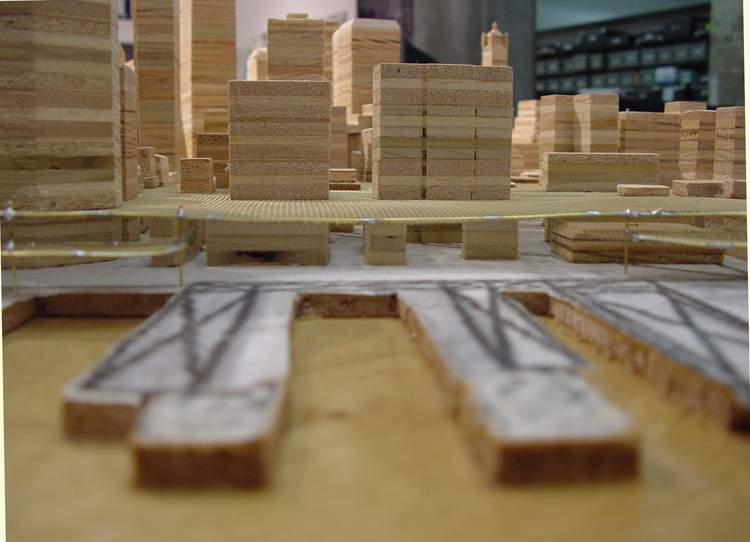
2002
proposal : A New World Trade Center Exhibition
Not a building
Not a memorial . . .
“ . . . into the sky laying prone and vanquished in the embrace of the season of rain and death.” -William Faulkner, Sanctuary
A Boeing 767, full of fuel and the blood of innocents, arcing sharply in the blue sky over Manhattan on September 11, 2001, ended the reign of the skyscraper. Nuclear waste, bunker-busting bombs and oxygen-depleting thermobaric explosives have ended the usefulness of a shelter, in use since the dawn of human existence – the cave.
The question is not which building to build to replace the shelters of the past but which direction to take in building for the future. As the destructive forces of terrorism and war provoke the military imagination toward more horrific inventions, what does the creative individual or team produce in the wake of such events? As Brecht noted to Benjamin, “Do not build on the good old days but on the bad new ones.”
Rising from lines of ash, debris and death drawn by FEMA as its boundaries, horizontally spreading across lower Manhattan, skirting open spaces and parks and subsiding before Ground Zero, leaving it time and space to find its recovery . . . .is a new system resting in the old canyons of late modernism.
S.P.R.E.A.D. (Social Platform Readily Engaged in Active Development) is a modular platform, suspended 72 feet off the streets and avenues of downtown New York City. It is a grid of new material combinations, filled with fibers and fluids of data, water and power and capable of generating new acres of sustainable infrastructure. This platform, managing its own wastes and water, equipped with an undercarriage of light, is buoyed by its skyscraper neighbors in symbiotic attachment. In exchange for structural support, it can supply its hosts additional power and water conservation as well as portals onto new work and leisure spaces.
A “system” as opposed to a building is proposed as a response to the destroyed World Trade Center. This New World Trade City is a horizontal plane supporting single story offices and “green park” components built on “floating” foundations. These work/green spaces can move about a grid (not unlike the cars and trucks below) arranging, connecting and adapting to needs and desires of people who work/play within, above, below.
A massive, object-based, monolithic expression of individual design has tragically fallen. Rising in its place is S.P.R.E.A.D. It presents a multitude of sites, in need of a new generation of designers to provide a diverse new city of human-scaled shelters, in an unusual open space.
A massive, ever changing, adapting infrastructure, teaming with a life of creative talent responding to the diversity of human needs, is a fitting response to the destruction of terror and war.

